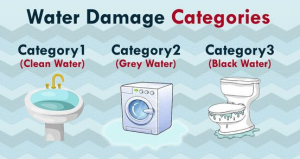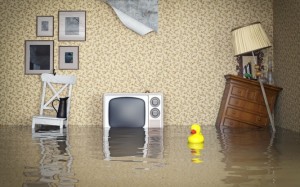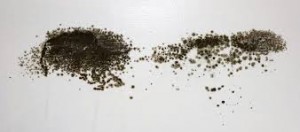There’s no way around it. As our weather gets more unpredictable every season, the chances of facing serious water damage cleanup in your home increases too. When Brisbane and the suburbs flood, it can take days and weeks to get things back to normal. Are you prepared to take on the job of restoring your property after it’s been soaked from floor to ceiling?
Flood Water Damage Remediation | What You Need to Know
The weather here in Australia has become increasingly unpredictable.You’ve seen what happens when the cities and regions old infrastructure fails. While storm flooding can be devastating, any water disaster creates serious problems in your home. Drywall water damage sets up an unhealthy environment that breeds mould, and soaked framing and sub flooring threaten your property’s structural integrity.
If you try to tackle these situations without a solid plan, you can actually make things worse. It’s our goal to arm you with the information you need to be prepared for big water disasters and ready for small cleanup jobs too. We help Australian homeowners recover from flood water damage every day, and we want to make a positive difference.
Understanding Your Water Damage Insurance Coverage
If you believe homeowners insurance covers all damages from flooding, it’s a good idea to talk with your agent. While your policy covers different types of water damage, flood insurance has to be purchased separately. Home insurance protects you in case of plumbing problems and burst pipes, but it doesn’t cover natural flooding events. You want the best homeowner’s insurance you can afford. Most agents are happy to work with you developing a policy that fits your house and budget. Now is the time to take a good look at your coverage and discuss the details with your agent. He or she may advise you to update important information or make changes that could save money.
Even individuals who are tenants can protect their belongings with renter’s insurance. However, a separate policy is still required in case of storm flooding.
Different Types of Water Damage
A leaky pipe under the kitchen sink doesn’t usually threaten your home’s structural integrity, but it can result in drywall water damage. Floodwater in the garage and lower level of your property leaves you facing very different problems. Most insurance agencies and restoration companies rate water damage according to these three criteria:
1. Low Level Damage
A leaky tap can easily be fixed and does not pose significant health risks. When clogged drains or leaking pipes are taken care of right away, your property damage risk stays low. Simple repairs go quickly, and you face minimum cleanup.
2. Medium Level Damage
This type of water can cause structural damage to your home. Burst pipes and roof leaks are examples of scenarios that cause medium level water damage. In these cases, soaked materials complicate and slow down repairs.
3. High Level Damage
In most cases, professionals are required to repair flooded properties. Natural disasters like severe storms and flash floods are responsible for high level damages. Repairs and cleanup problems range from flooded properties or garages to sewage backup in the house.
Different Levels of Danger

It’s important to understand water damage categories so that you don’t risk exposure to waterborne chemicals or pathogens.
A second category of water damage refers to the level of danger posed by contaminants in the water. It’s important to understand these categories so that you don’t risk exposure to waterborne chemicals or pathogens.
1. Clean Water
In terms of personal safety, water is considered clean if it isn’t contaminated at the source. Leaky taps or broken water lines coming into the house rarely pose a serious health threat.
2. Grey Water
Clean water becomes grey water when it begins to breed bacteria. This often occurs if the water source is a broken disposal, dishwasher or washing machine. Grey water often contains harsh chemicals.
3. Black Water
Black water carries disease-causing pathogens and microorganisms that cause serious illness and even death. Floodwaters and backed-up sewer lines can push black water through your home’s plumbing and into the house. If you have any reason to suspect black water has contaminated your property inside or out, call a restoration contractor immediately. The situation is very dangerous.
Flood Water Damage | What You Can Do
Unless you’re dealing with sewage backup, you can take care of most small cleanup and restoration projects on your own as long as you get started right away. But even small jobs take time, so be patient as you follow these few steps.
- Identify and Repair. You have to wait for floodwaters to recede, but most plumbing problems can be quickly identified and fixed.
- Remove the Water. If you’re dealing with an inch of water or less, extract as much as possible from floors with a wet vacuum. Pull up carpets and padding so that the subfloor can thoroughly dry.
- Dispose of Damaged Materials. Badly soaked carpets, cupboards and gyprock aren’t worth saving. Whatever can’t be salvaged must be torn out and disposed of safely to reduce the risk of fungal contamination.
- Start Cleaning Up. Don’t begin this step until everything is completely dry. Clean all affected areas, sanitise surfaces, and use special disinfectants on sheetrock to discourage mould.
It’s important to take care of water damage cleanup as soon as possible. Otherwise, the lingering damp encourages unhealthy mould growth, and it can threaten your home’s structural integrity. If you can’t address repairs and cleanup right away, reach out to a restoration company for help.
Water Damage Remediation | What You Shouldn’t Do
Water damaged ceilings can collapse and pose a significant hazard to you and your family. Never attempt cleanup on your own. Although you can tackle some small repairs and water damage cleanup on your own, some problems are better handled by a restoration company especially in cases like these:
- Flooding affects your home’s electrical system. An experienced water damage contractor works with licensed electricians who restore safety inside and out.
- Water-soaked ceilings begin to bulge and buckle. They need immediate professional repair to prevent the danger of cave-ins and restore structural integrity.
- More than an 2.5cm of water in any area absorbs into walls and house framing. Water damage remediation specialists detect and remove hidden moisture with state-of-the-art equipment.
- Cleanup delays cause mould growth in as little as 24 hours, and it quickly spreads throughout the house. A restoration contractor starts water extraction, drying and cleanup processes right away.
- Dangerous sewage water contaminates floors and walls as it backs up into your home. Industry certified technicians use advanced equipment and techniques to repair the source and sanitise all affected areas.
Flood Water Damage in your Property | How to Plan Ahead Now
You can develop a plan that puts you in the best position possible to handle water damage emergencies.
- Talk with your insurance agent about your homeowner’s policy. Discuss the details of your property’s water damage coverage including flood insurance options.
- Check the house inside, out and on the roof for problems that might make it vulnerable to flooding. Put this routine on your spring and fall list of home maintenance chores.
- Locate the main cut-off valve for your home’s water supply, and make sure it’s working properly. Inspect washing machine hose connections and small valves under sinks.
- Work up an evacuation plan in case you have to leave the house during street flooding. Determine the safest routes out of your neighbourhood.
Planning ahead helps minimise property damage from floods and plumbing disasters, and it also gives you important peace of mind. When heavy storms hit or a pipe bursts, you know both your family and your home can weather any type of water disaster because you’re prepared.
Sewage Cleaning Australia is the Nations Leader in all Water Damage Remediation
Sewage Cleaning Australia is backed by a network of Water Damage Remediation experts across the country with the skills and experience to successfully and promptly remediate any property affected by flooding or water damage. We work closely with homeowners and insurance agents all across the country, and we’re proud to do our part making the water restoration process a little easier.
From flooded garages to soaked ceilings, our team are available and ready 24/7 to tackle any job. We’re proud of our reputation as the most trusted water damage restoration company in Australian cities and towns, with no region too remote. When you find yourself facing more than you can handle alone, you can always count on Sewage Cleaning Australia.



